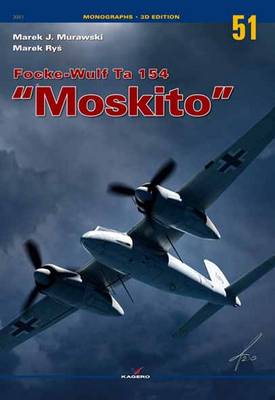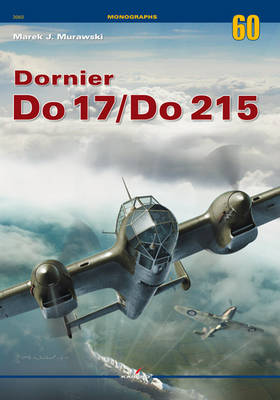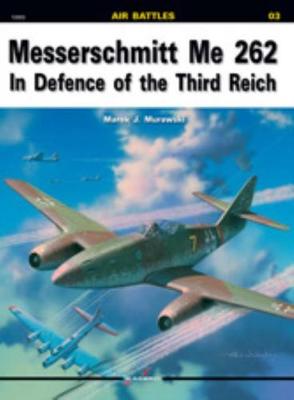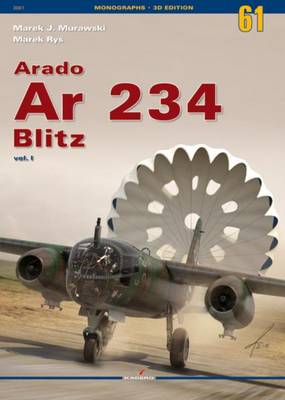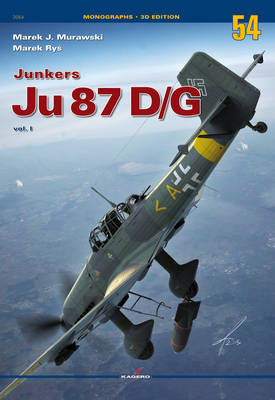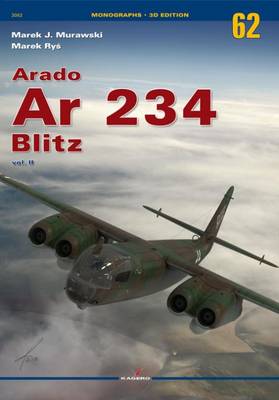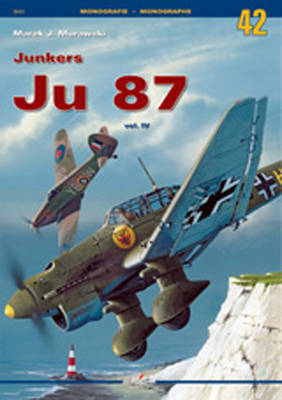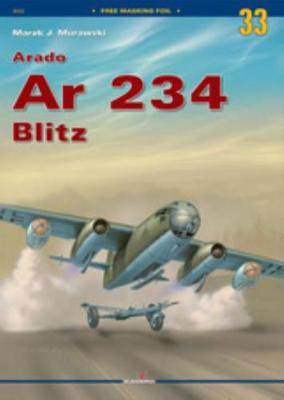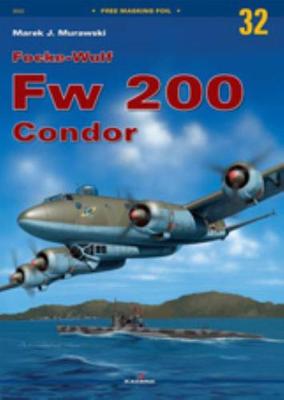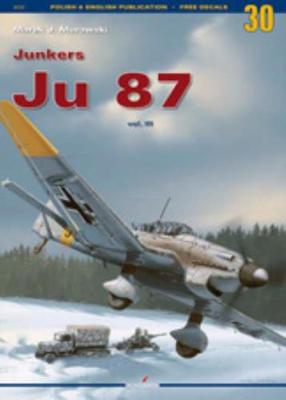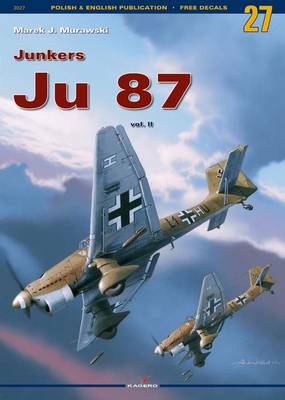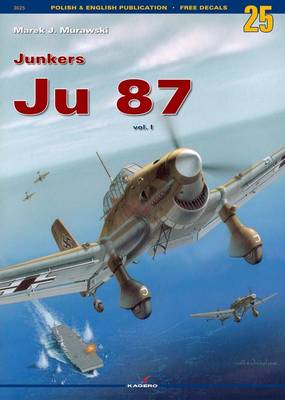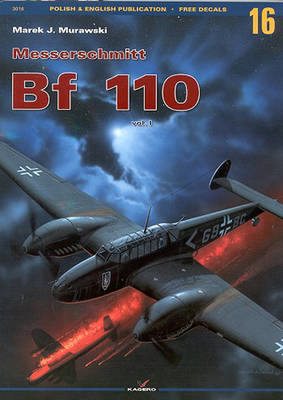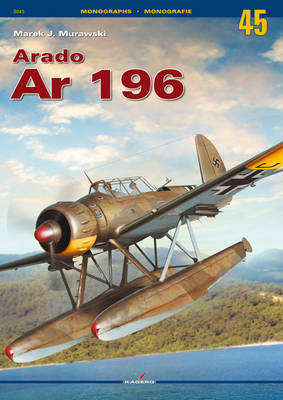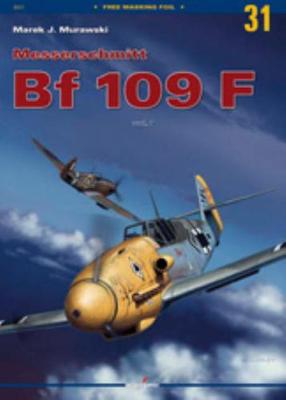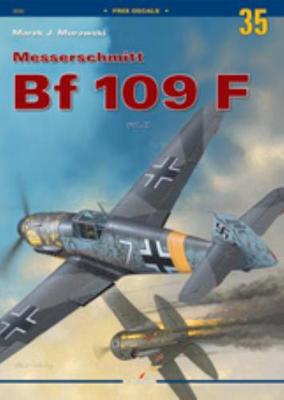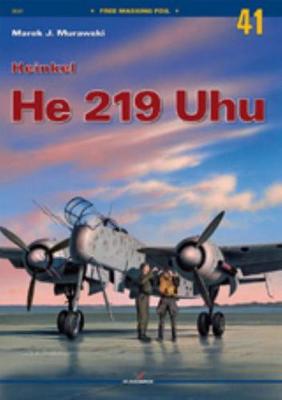Monographs
1 primary work • 20 total works
Book 16
In combat, when properly flown, it proved to be virtually untouchable and able to outrun its Allied counterparts by as much 100mph. The Me 262 claimed a total of 509 Allied kills during the course of the war, largely in defence of its own country.
Content includes revolutionary design, Kommando Nowotny, Jagdgeschwader 7, March-May 1945.
With colour artworks, numerous photographs, line drawings and a free decal sheet.
About the Series
Air Battles is a series of books focusing on World War II air battles of specific aircraft and units. Each volume contains information on the planes involved, lists of scores, pilot reports and portraits, colour profile artwork and maps.
The Junkers Ju 87 or Stuka (from Sturzkampfflugzeug,"dive bomber") was a two-seat (pilot and rear gunner) German ground-attack aircraft. Designed by Hermann Pohlmann, the Stuka first flew in 1935 and made its combat debut in 1936 as part of the Luftwaffe's Condor Legion during the Spanish Civil War.
The aircraft was easily recognizable by its inverted gull wings, fixed spatted undercarriage and its infamous Jericho-Trompete ("Jericho Trumpet") wailing siren, becoming the propaganda symbol of German air power and the"Blitzkrieg" victories of 1939-1942. The Stuka's design included several innovative features, including automatic pull-up dive brakes under both wings to ensure that the plane recovered from its attack dive even if the pilot blacked out from the high acceleration. Although sturdy, accurate, and very effective, the Ju 87 was vulnerable to modern fighter aircraft, like many other dive bombers of the war, particularly during the conflict over the skies and seas of the British Channel.
About the Series
Monographs is a series focusing on an individual type of aircraft. Each monograph contains descriptions of the aircraft’s origins, its variants and combat history. Each volume includes several hundred archive photographs, technical scale drawings and colour profile artworks, with free extras for modellers, including decals and masking foil.
Each version is specified and described, including few which never progressed beyond the drawing board. The book features a long chapter with coverage of Ar 234’s combat use in various reconnaissance units and, as a bomber, in Kampfgeschwader 76 service. A short overview of the operational trials of a night fighter variant is also included.
Complete with 100 pages, 128 photographs (including 16 in colour), 24 sheets of factory drawings, 5 colour charts with 10 examples of camouflage schemes, and extra 1:48 canopy masks could be ordered if required.
About the Series
Monographs focuses on an individual type of aircraft. Each monograph contains descriptions of the aircraft’s origin, its variants and combat history. Each volume includes several hundred archive photographs, technical scale drawings and colour profile artwork. Each book also has free extras for modellers, with decals and masking foil.
A separate chapter is devoted to camouflage and markings. The book constitutes a thorough insight into the Fw 200 service as airliner, transporter, bomber and reconnaissance plane. Its utility in warfare over the Atlantic, where Condors inflicted a massive toll on Allied convoys, is thoroughly described. Includes technical data.
Complete with 104 pages, 119 photographs, 24 sheets of factory drawings, 5 colour charts with 10 examples of camouflage schemes.
Extra 1:32 or 1:48 canopy masks could be ordered.
About the Series
Monographs focuses on an individual type of aircraft. Each monograph contains descriptions of the aircraft’s origin, its variants and combat history. Each volume includes several hundred archive photographs, technical scale drawings and colour profile artwork. Each book also has free extras for modellers, with decals and masking foil.
The`Stuka’ actions over Russia featured brilliant triumphs and significant losses. A large part of this chapter is devoted to the actions of Hans-Urlich Rudel. The night ground attack missions in Western Europe, Russia and Italy are also covered. The book features a short description of Ju 87 in other Axis air forces service and discusses test flights of captured planes.
Free 1:32, 1:48 and 1:72 decals for 8 schemes:
Ju 87 D-1,’T6+AK’, flown by Oblt. Andreas Kuffner of 2./StG 2, Dno, Russia, 1942/43.
Ju 87 D-1,`S2+AL’, flown by Oblt. Scheffel of 3./StG 77, Sarabus-Süd, Crimea, 1942.
Ju 87 D-3,`S7+EP’ of 6./StG 3, North Africa, 1942/43.
Ju 87 D-3,’T6+BL’ of 3./StG 2, Stalino, 1943.
Ju 87 D-5,`S7+AH’ of 1./SG 3, Immola, Finland, 1944.
Ju 87 D-5,`S7+BH’ of I./SG 3, Pskov, Russia, 1943/44.
Ju 87 D-5,`S7+LL’, flown by Uffz. Friedrich Hermleben of 3./SG 3, Immola, Finland, 1944.
Ju 87 D-5, 1./2. Szturmowi Orlak, Bulgaria, 1944
About the Series
Monographs focuses on an individual type of aircraft. Each monograph contains descriptions of the aircraft’s origin, its variants and combat history. Each volume includes several hundred archive photographs, technical scale drawings and colour profile artwork. Each book also has free extras for modellers, with decals and masking foil.
Their utility in air warfare in Spain, Poland and Norway together with the Western Campaign and Battle of Britain is thoroughly described, including the missions against Royal Navy in the Mediterranean area, over the Balkans and Crete.
Complete with 132 pages, 115 photographs, 20 sheets of technical drawings in 1:48 and 1:72 scale with specification of external changes in production-run versions of the aircraft and 9 colour charts with 16 examples of camouflage schemes.
Free 1:48 and 1:72 decals for 5 schemes:
Ju 87 B-1,`A5+DH’ of 1./StG 1, Elbing, East Prussia, 1939.
Ju 87 B-1,`6G+HR’ of 7./StG 51, France, 1940.
Ju 87 B-2, W.Nr. 313,`T6+IH’ of 1./StG 2, France, 1940.
Ju 87 R-2,`A5+BL’ of 3./StG 1, Stavanger-Sola, 1940.
Ju 87 R-2, W.Nr. 5473,`T6+CL’ of 3./StG 2, France 1940.
About the Series
Monographs focuses on an individual type of aircraft. Each monograph contains descriptions of the aircraft’s origin, its variants and combat history. Each volume includes several hundred archive photographs, technical scale drawings and colour profile artwork. Each book also has free extras for modellers, with decals and masking foil.
The book constitutes a thorough insight into the emergence and evolution of the idea of dive bombing in USA and Germany. Includes specifications of the key Ju 87 variants.
124 pages, 108 photographs, 20 sheets of technical drawings in 1:48 and 1:72 scale with specification of external changes in production-run versions of the aircraft, 11 colour charts with 16 examples of camouflage schemes.
About the Series
Monographs focuses on an individual type of aircraft. Each monograph contains descriptions of the aircraft’s origin, its variants and combat history. Each volume includes several hundred archive photographs, technical scale drawings and colour profile artwork. Each book also has free extras for modellers, with decals and masking foil.
The initial production models of the A, B, C and D series were fitted with the relatively low-powered, 670–700 PS Junkers Jumo 210 series engines. A handful of prototypes of these early aircraft were converted to use the more powerful DB 600.
This volume includes many rare colour profile artworks, detailing the impressive fighter.
About Monographs
Monographs focuses on an individual type of aircraft. Each monograph contains descriptions of the aircraft’s origin, its variants and combat history. Each volume includes several hundred archive photographs, technical scale drawings and colour profile artwork.
Originally designed as a long range heavy fighter (Zerstörer), Bf 110 was used as a reconnaissance and ground attack aircraft as well as a night fighter with advanced radio, navigation and radar systems. The book features a detailed description of the aircraft’s structure and technical data and a chapter about camouflage and markings.
Complete with 116 pages, 124 photographs, 32 sheets of technical drawings in 1:48 and 1:72 scale with specification of external changes in production-run versions of the aircraft and 9 colour charts with 16 examples of camouflage schemes.
Free 1:48 and 1:72 decals for 2 schemes:
Bf 110 E-2,`3U+KS’ of 8./ZG 26, North Africa, 1942.
Bf 110 G-4/R3,`G9+DC’, flown by Oblt. Leo Baro of Stab II./NJG 1, Germany, May 1945.
About the Series
Monographs is a series focusing on an individual type of aircraft. Each monograph contains descriptions of the aircraft’s origins, its variants and combat history. Each volume includes several hundred archive photographs, technical scale drawings and colour profile artworks, with free extras for modellers, including decals and masking foil.
Loved by its pilots for its superior handling both in the air and on the water, the A-1s were added to coastal squadrons, and continued to fly reconnaissance missions and submarine hunts into late 1944. Two notable operations were the capture of HMS Seal, and the repeated interception of RAF Armstrong-Whitworth Whitley bombers. Although it was no match for a fighter, it was considerably better than its Allied counterparts, and generally considered the best of its class. Owing to its good handling on water, the Finnish Air Force utilised Ar 196 solely on transporting and supplying special forces patrols behind enemy lines, landing on small lakes in remote areas. Several fully equipped soldiers were carried in the fuselage.
This volume includes many rare colour profile artworks, detailing the aircraft.
About Monographs
Monographs focuses on an individual type of aircraft. Each monograph contains descriptions of the aircraft’s origin, its variants and combat history. Each volume includes several hundred archive photographs, technical scale drawings and colour profile artwork.
Afterwards, the book features the combat debut of Bf 109 F on the Western Front and the missions of Jagdgeschwader 2& 26 over the English Channel, south-east England and France, during which their `Friedrichs’ acted as fighters and fighter-bombers.
Complete with 100 pages, 102 photographs, 24 sheets of factory drawings, 9 colour charts with 18 examples of camouflage schemes.
About the Series
Monographs focuses on an individual type of aircraft. Each monograph contains descriptions of the aircraft’s origin, its variants and combat history. Each volume includes several hundred archive photographs, technical scale drawings and colour profile artwork. Each book also has free extras for modellers, with decals and masking foil.
The subsequent chapter features a comprehensive description of the battles against Soviet VVS from the start of Operation Barbarossa till the Summer Offensive in 1942, including the operations beyond the Polar Circle. The author uncovers the fates of particular fighter units as well as individual pilots who fought in them.
Complete with 100 pages, 110 photographs, 24 sheets of technical drawings in 1:48 and 1:72 scale with specification of external changes in production-run versions of the aircraft, 9 colour charts with 12 examples of camouflage schemes.
About the Series
Monographs focuses on an individual type of aircraft. Each monograph contains descriptions of the aircraft’s origin, its variants and combat history. Each volume includes several hundred archive photographs, technical scale drawings and colour profile artwork. Each book also has free extras for modellers, with decals and masking foil.
This volume provides a detailed illustrated history of this unique aeroplane, including colour artwork profiles, photographs and free masking foil.
About the Series
Monographs focuses on an individual type of aircraft. Each monograph contains descriptions of the aircraft’s origin, its variants and combat history. Each volume includes several hundred archive photographs, technical scale drawings and colour profile artwork. Each book also has free extras for modellers, with decals and masking foil.


